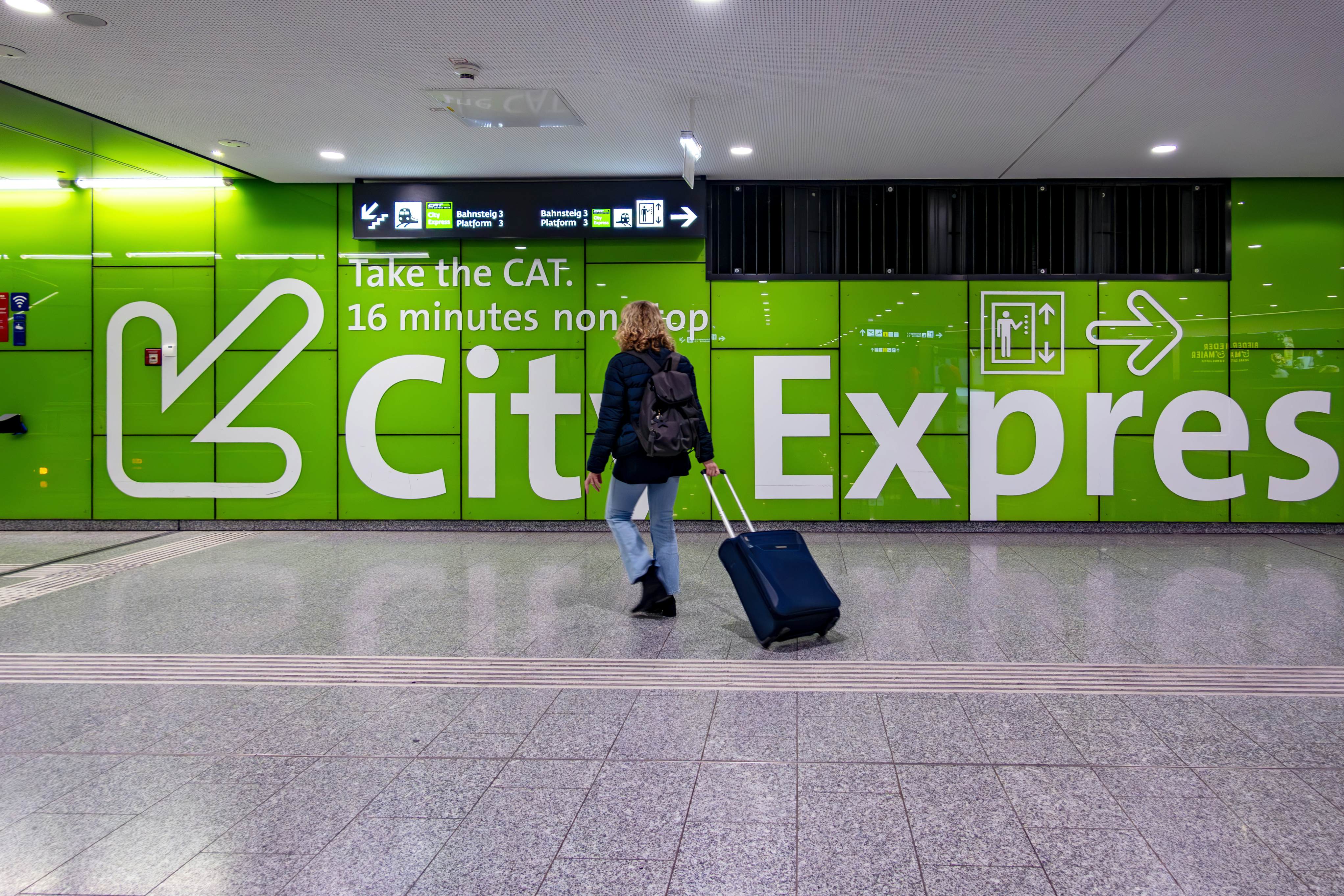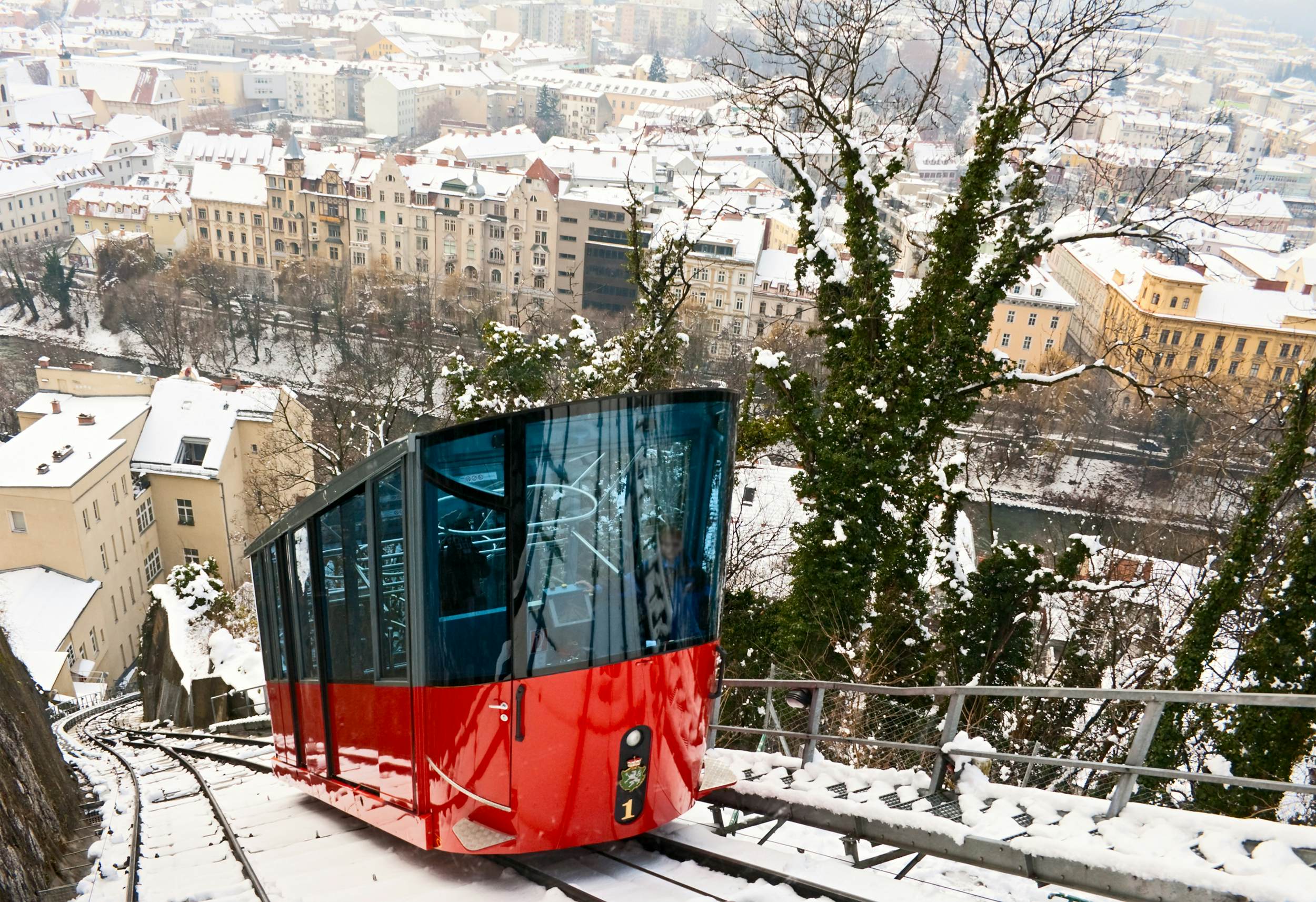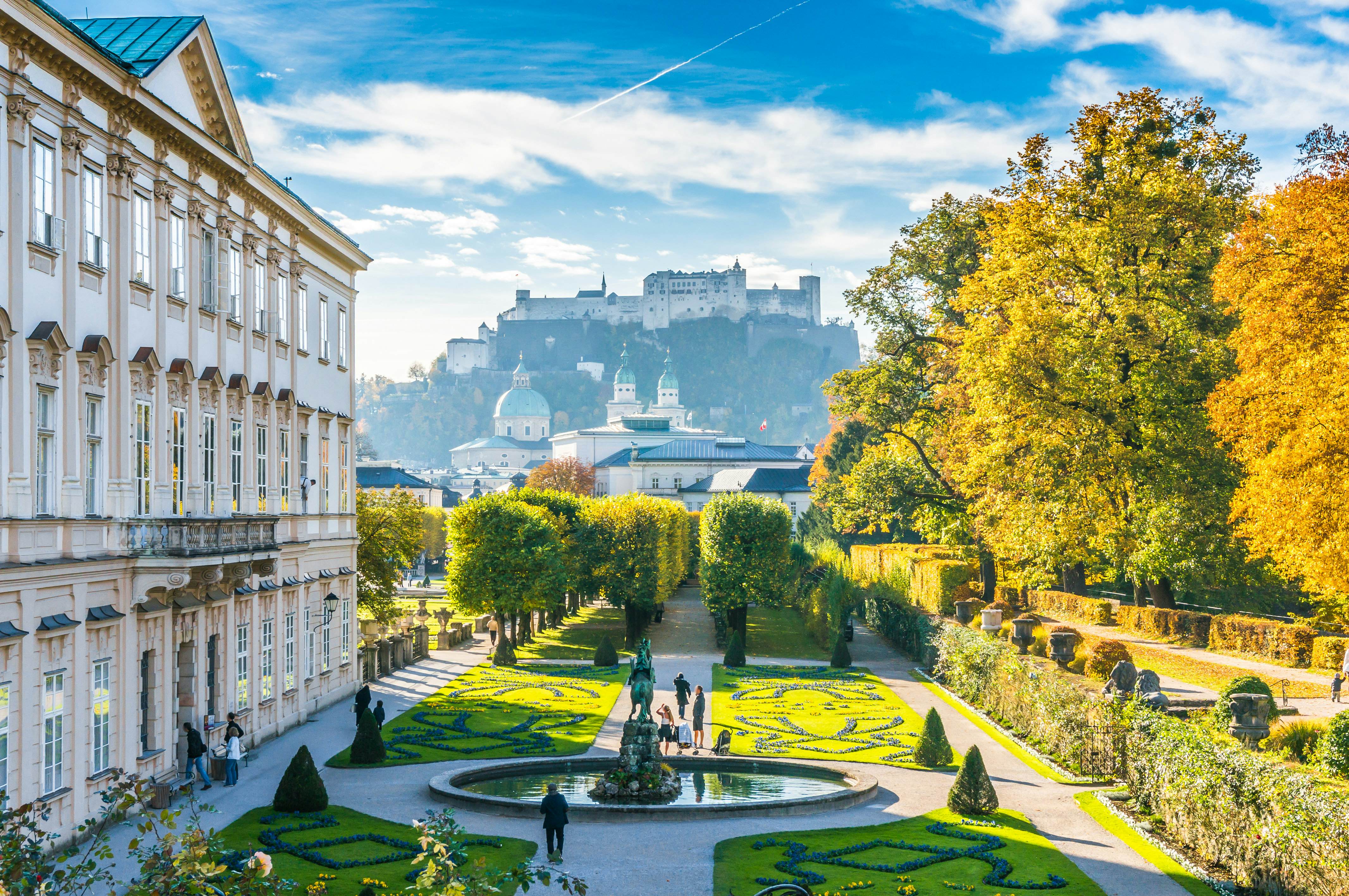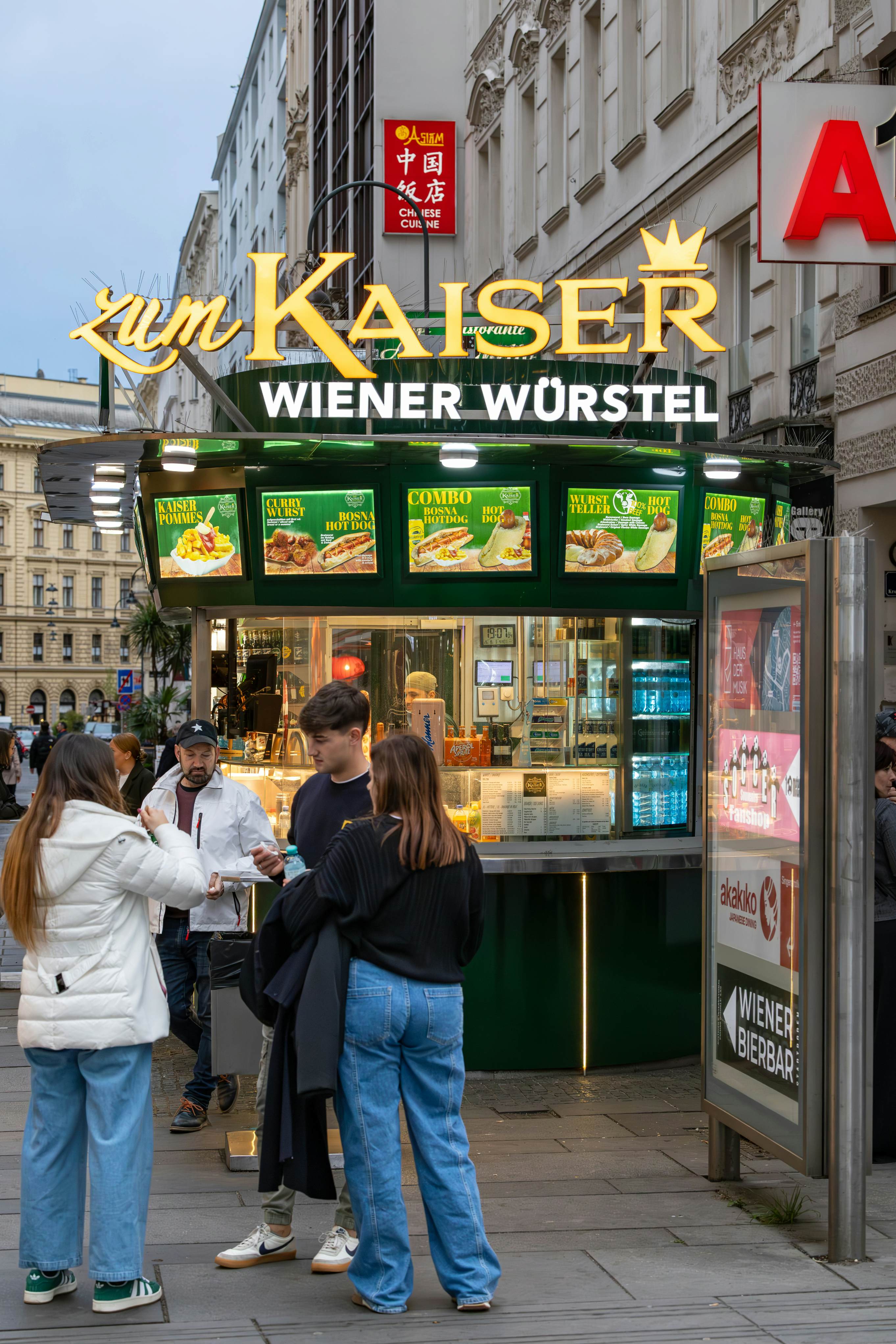How to visit Austria on a budget
6 min readDespite its monarchically lavished cities, alpine villages at the foot of gondola-gliding peaks, and enchanting lakeside hangouts, you don’t need pockets as deep as an emperor to enjoy Austria.
Much like its Western European neighbours, Austria is a far stretch from being a shoestring destination. But public transportation is inexpensive, guest cards bundle together a staggering stack of discounts, you can wander the grounds of grandiose sites and climb every mountain without spending a cent, and street food balances out the splurge on schnitzel.
Here’s how to make your budget stretch further on your visit to Austria.
Daily costs
- Dorm bed in a hostel: €30
- Basic hotel room for two: €100
- Daily travel card on public transport: €8
- City card, 24 hours: €70
- Museum entry: €15
- Cup of coffee: €4.50
- Three-course restaurant dinner for two: €80
- A glass of Austrian wine: €4
- A pint of beer at the bar: €4
- Average daily cost: €150

Fly into Vienna for the best choice of budget air fares
While Salzburg, Innsbruck, Klagenfurt and Graz have airports, Vienna International Airport is Austria’s biggest, serving more flights from budget airlines such as Ryanair, Wizz Air and Eurowings.
Travel in the shoulder seasons for cheaper room rates
The winter ski season (December to April) and summer (June to August) are the busiest times to visit Austria. In the spring and autumn shoulder seasons (May, and September to November), you’ll be more likely to snag better-priced rooms, score tickets on popular transport routes and find fewer crowds to make the most of your time at museums and other major sights.
Book train tickets in advance to get around for less
The cheapest way to get around Austria is by purchasing advance train tickets. Save half or more on the cost of a standard ticket by booking a bargain fixed-departure-time Sparschiene ticket with national rail operator ÖBB. But before you book, compare prices with private rail operator WESTbahn, which connects Vienna to Salzburg, Innsbruck and Bregenz with supersaver and flexible tickets. And, depending on your plans, consider whether a Eurail Austria pass – which starts at €144 for three days – might be more cost-effective.
Read more: Everything you need to know about getting around Austria
Get a 24-hour pass for unlimited public transportation
In big cities, a single ride on public transport might cost as little as €2.40, but don’t pay as you go if you plan to travel several times over the course of a day; you’ll save money with a 24-hour pass, which costs less than €10.

Plan your days – a city tourist pass could save you money
Palaces, museum complexes and tempting day trips – traveling on a budget shouldn’t mean having to max out on one highlight per day. Depending on your plans, you could save money with city tourist passes in 24-, 48-, or 72-hour variations, which include public transportation and discounts for attractions.
The Vienna City Card includes a 20% discount on participating hotels and restaurants.
You’ll get the Innsbruck Welcome Card with a stay of two nights at partner hotels and it includes weekly guided hiking and e-biking tours
The Graz Card adds on free travel on the Schlossbergbahn and the Schlossberglift, as well as an old town tour.
The Linz Card grants free museum entry, a €10 voucher redeemable on concerts and river cruises and throws in a trundle on the mountain tramway Pöstlingbergbahn.
The Salzburg Card represents the best value for money. It offers one night of accommodation and free admission to every city tourist attraction and museum that you can squeeze in.
Book at partner hotels with regional discount cards
If you’re roaming a region you can look out for guest cards offering unlimited transport, entry discounts and access to outdoor activities.
If you book a room at a partner hotel in Tyrol, Vorarlberg, Salzburgerland, Upper Austria and Burgenland and you’ll get a card for free at check-in.
In areas without partner hotel links you can buy regional money-saving cards, such as Carinthia (Kärnten Card), Styria (Steiermark-Card) and Lower Austria (Niederösterreich-CARD),

Seek out attractions that cost nothing (nature is free)
UNESCO-protected old towns are open-air museums, and the landscaped gardens of opulent abodes – including those at Schönbrunn and Belvedere in Vienna and Mirabell Gardens in Salzburg – are public-access enchantments. Beyond the gilded halls, several film and music events across the country don’t require a ticket, including Vienna’s Summer Night Concert in Schönbrunn Palace (June), the Vienna Film Festival (June to September) and Salzburg’s Mirabell Gardens Sunday Promenade Concerts (May until August).
For the pinnacle of budget exploration, skip the cable car ticket and pick a hiking route for valley and vineyard highs. And if you don’t find yourself scrambling for a deck-side spot at one of Austria’s bathing lakes, swim in Vienna’s Alte Donau or Salzburg’s Almkanal, instead of pay-for-entry lidos.
Visit museums for free
Ticket costs to see Vienna’s assemblage of art and heritage quickly stack up, but more than one million objects are showcased for free at the Wien Museum Karlsplatz, giving you a taster of the city’s millennium of history. There’s also free admission every first Sunday of the month at Hermesvilla (former escape of Empress Elisabeth, the wife of Emperor Franz Joseph I) in the Lainzer Tiergarten, the artifact-loaded Römermuseum (Roman Museum) and six houses that were once home to the composers Beethoven, Haydn, Schubert, and Strauss.
Max out the value of your ticket on late-night open days – Vienna’s Kunsthistorisches Museum Wien and Leopold Museum are open until 9pm on Thursdays; the Naturhistorisches Museum until 8pm on Wednesdays; and Salzburg’s Museum der Moderne stays open until 8pm on Thursdays.
Across Austria for one night in October, the Long Night of the Museums offers the chance to culture-cram as many museums as you like from 6pm until 1am for the cost of a single €15 ticket.

Look out for discounts for children, students and over-60s
From transport to theatre shows, museums to mountain lift passes, showing the relevant ID can get you free or discounted admission.
Join free walking tours and greeter programmes
Join walking tours with locals who will introduce you to their city on a “for-tips” basis. Vienna has nine free tours to choose from. Check out the first free walking tour in Salzburg and Innsbruck’s greeter network. Or guide yourself through Austria’s splendor with apps like GPSMYCITY, which currently covers 13 destinations in the country.
Eat breakfast at a bakery and not your hotel
Swap pricey continental breakfasts for bakeries with flavorful bread, pastries and coffee. Ströck, Anker, and Der Mann are fresh-out-of-the-oven chains, and neighborhoods are dotted with independent bake shops.
Scour supermarkets for end-of-day deals
Whether in a Dorf (village) or a Stadt (city), you’ll find a supermarket like Billa, Spar, Hofer or MPREIS for a quick, on-the-road fill-up or a budget-friendly at-home feast. For farm-fresh produce, meander mouthwatering markets like Naschmarkt and Brunnenmarkt in Vienna, Kaiser Josef Markt in Graz, and the Market Hall in Innsbruck.
Download the Too Good to Go app and grab last-minute food bundles from grocery stores, supermarkets, bakeries and take-outs. Some generous goodie bags are under €5.

Snack on street food
A rite of passage in Vienna, but found in other cities too, the typically late-night snack stop of a Würstelstand (sausage stand), is where you can pick up a Käsekrainer (a sausage stuffed with tiny cheese cubes) and a beer for less than €10. Thanks to the multicultural crossover, kebab and shawarma vendors abound, as well as Balkan street food like the bosna (hot dog) and ćevapčići (grilled meat).
Bring a reusable water bottle
Stay hydrated with the purest water straight from the mountains. Vienna’s 1300 drinking fountains bring fresh mountain spring water from the Lower Austrian Styrian Alps to the streets, and 27 of Salzburg’s 49 water fountains flow with the mountain spring elixir dubbed the “Untersberg Champagne.” All tap water in Austria is safe to drink, thanks to its alpine freshness. This is why the coffee and Spritzer (wine and sparking water) taste so good here.



